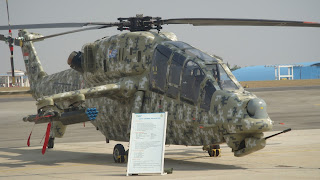From the beginning of the era of development of the missiles technology, Pakistani ballistic missiles have been the pain in ash* to Indian strategic planners.Threats of strategic ballistic missiles from its naughty neighbor are increasing day by day.So the real question is that can India defend itself from this kind of growing threat which is growing exponentially? Let's try to answer this question by analyzing the threats of Ballistic missiles and capabilities of young ballistic missile defense system, which is currently in development under the aegis of DRDO.
THREAT:
LEVEL 0 (No Threat): In threat level-0 I would like to suggest some false threat of Paki Battlefield range ballistic missile (BRBM) threat. These type of missiles are having very short range and especially in the case of Pakistani missiles they are unguided, liquid fueled and obsolete in every aspect. However, without any hesitation, Paki media and defense spokesperson continuously keep trolling.These missiles are told be capable of carrying tactical nuclear warhead but their range is very less even they are not comparable to Indian Pinaka mark-2 version which India consider as a simple rocket.If you are thinking about what is a ballistic missile to Pakistan? If you are thinking of artillery rocket then still you are wrong because they are inferior to them also, not only in term of accuracy but also in their range too.To use these missiles in case of war with India they would need to be very close to the Indian border and I believe it will be very intimidating to Indian strike fighters like Jaguar, Mirage 2K and even to our newly crafted Tejas.So ultimately they would be destroyed before they see action in the battleground.I am not sarcastic however, I would like to announce the name of honourable contenders who comes in false threat category, so behold the first contender is .......
1.Nasr:
Specifictions:-
Engine: Solid Fueled Rocket Motor
Range: 60kms(which is even lesser than Guided Pinaka(75kms))
Launcher: Transporter Erector Launcher(TEL)
And another lucky one is
2.Hatf 1:
Specifications:-
Engine: Solid Fueled Rocket Motor
Range: 100kms
Launcher: Transporter Erector Launcher(TEL).
THREAT:
LEVEL 0 (No Threat): In threat level-0 I would like to suggest some false threat of Paki Battlefield range ballistic missile (BRBM) threat. These type of missiles are having very short range and especially in the case of Pakistani missiles they are unguided, liquid fueled and obsolete in every aspect. However, without any hesitation, Paki media and defense spokesperson continuously keep trolling.These missiles are told be capable of carrying tactical nuclear warhead but their range is very less even they are not comparable to Indian Pinaka mark-2 version which India consider as a simple rocket.If you are thinking about what is a ballistic missile to Pakistan? If you are thinking of artillery rocket then still you are wrong because they are inferior to them also, not only in term of accuracy but also in their range too.To use these missiles in case of war with India they would need to be very close to the Indian border and I believe it will be very intimidating to Indian strike fighters like Jaguar, Mirage 2K and even to our newly crafted Tejas.So ultimately they would be destroyed before they see action in the battleground.I am not sarcastic however, I would like to announce the name of honourable contenders who comes in false threat category, so behold the first contender is .......
1.Nasr:
Specifictions:-
Engine: Solid Fueled Rocket Motor
Range: 60kms(which is even lesser than Guided Pinaka(75kms))
Launcher: Transporter Erector Launcher(TEL)
And another lucky one is
2.Hatf 1:
Specifications:-
Engine: Solid Fueled Rocket Motor
Range: 100kms
Launcher: Transporter Erector Launcher(TEL).













